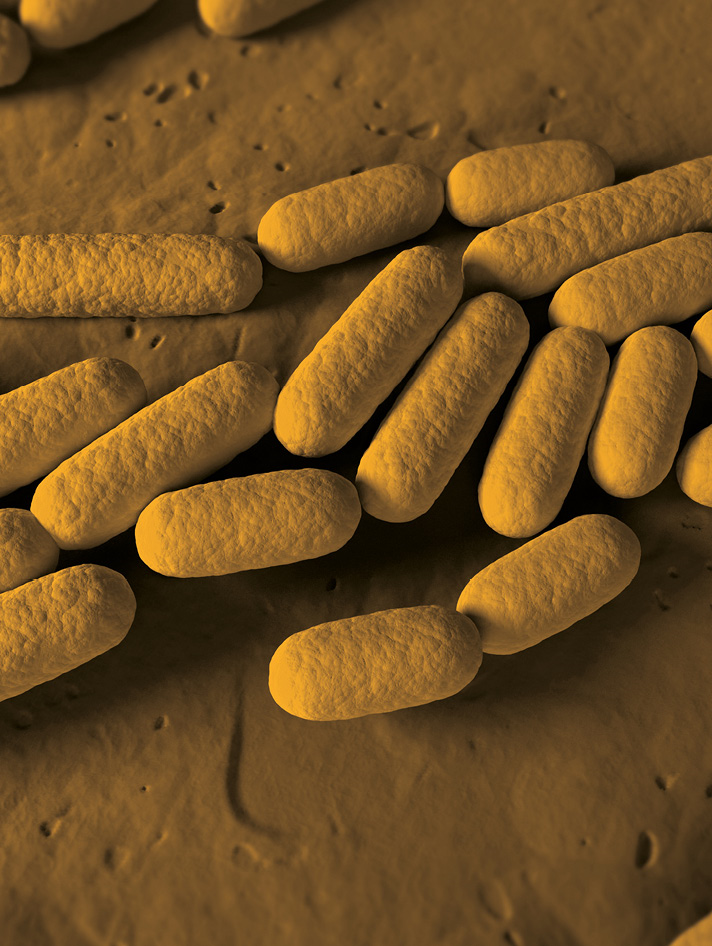View Item
- xmlui.general.dspace_homeCentros e Institutos de InvestigaciónCICVyA. Centro de Investigación en Ciencias Veterinarias y AgronómicasInstituto de BiotecnologíaArtículos científicosxmlui.ArtifactBrowser.ItemViewer.trail
- DSpace Home
- Centros e Institutos de Investigación
- CICVyA. Centro de Investigación en Ciencias Veterinarias y Agronómicas
- Instituto de Biotecnología
- Artículos científicos
- View Item
Paenibacillus xylanivorans sp. nov., a xylan-degrading bacterium isolated from decaying forest soil
Abstract
A xylanolytic bacterial strain, named A59T, was isolated from a forest soil consortium in southern Argentina. Strain A59T is a Gram-stain-positive, facultative anaerobic, endospore-forming and rod-shaped bacterium. Its optimal growth conditions are 30 °C (range, 28-37 °C), pH 7 (range, pH 5-10) and it tolerates up to 7 % of NaCl (range, 2-7 %). Chemotaxonomic analysis revealed that strain A59Tpossesses meso-diaminopimelic acid in the cell wall. It
[ver mas...]
A xylanolytic bacterial strain, named A59T, was isolated from a forest soil consortium in southern Argentina. Strain A59T is a Gram-stain-positive, facultative anaerobic, endospore-forming and rod-shaped bacterium. Its optimal growth conditions are 30 °C (range, 28-37 °C), pH 7 (range, pH 5-10) and it tolerates up to 7 % of NaCl (range, 2-7 %). Chemotaxonomic analysis revealed that strain A59Tpossesses meso-diaminopimelic acid in the cell wall. It contains menaquinone MK-7 as the predominant isoprenoid quinone and the major fatty acid is anteiso-C15 : 0 (35.1 %), with a moderate amount of C16 : 0 (6.9 %). According to 16S RNA gene sequence analysis, the isolate is phylogenetically placed in the same cluster as Paenibacillus taichungensis BCRC 17757T (99.7 % nucleotide sequence identity) and Paenibacillus pabuli NBRC 13638T (99.1 %) and is closely related to Paenibacillus tundrae A10bT (98.8 %). However, phylogenetic studies based on the housekeeping gyrB gene placed A59T in a separate branch from all other related type strains. Furthermore, the results of whole genome average nucleotide identity analysis (gANI) with related type strains was lower than 91.10 % and the digital DNA-DNA hybridization value was lower than 44.30 %, which are below the threshold values for separating two species. The DNA G+C content was estimated as 46.09 mol%, based on genome sequencing. On the basis of these results, A59T represents a new species of the genus Paenibacillus, and we propose the name Paenibacillusxylanivorans sp. nov. The type strain is A59T (=DSM 107920T=NCIMB 15123T).
[Cerrar]

Author
Ghio, Silvina;
Sauka, Diego Hernan;
Ferrari, Alejandro E.;
Piccinni, Florencia Elizabeth;
Ontañon, Ornella Mailén;
Campos, Eleonora;
Fuente
International journal of systematic and evolutionary microbiology 69 (12) : 3818-3823. (December 2019)
Date
2019-12
Editorial
Microbiology Society
ISSN
1466-5026
1466-5034 (Online)
1466-5034 (Online)
Documentos Relacionados
Formato
pdf
Tipo de documento
artículo
Proyectos
(ver más)
INTA/PNAIyAV/1130034/AR./Desarrollo de procesos para la transformación de biomasa en bioenergía.
Palabras Claves
Derechos de acceso
Restringido
 Excepto donde se diga explicitamente, este item se publica bajo la siguiente descripción: Creative Commons Attribution-NonCommercial-ShareAlike 2.5 Unported (CC BY-NC-SA 2.5)
Excepto donde se diga explicitamente, este item se publica bajo la siguiente descripción: Creative Commons Attribution-NonCommercial-ShareAlike 2.5 Unported (CC BY-NC-SA 2.5)

